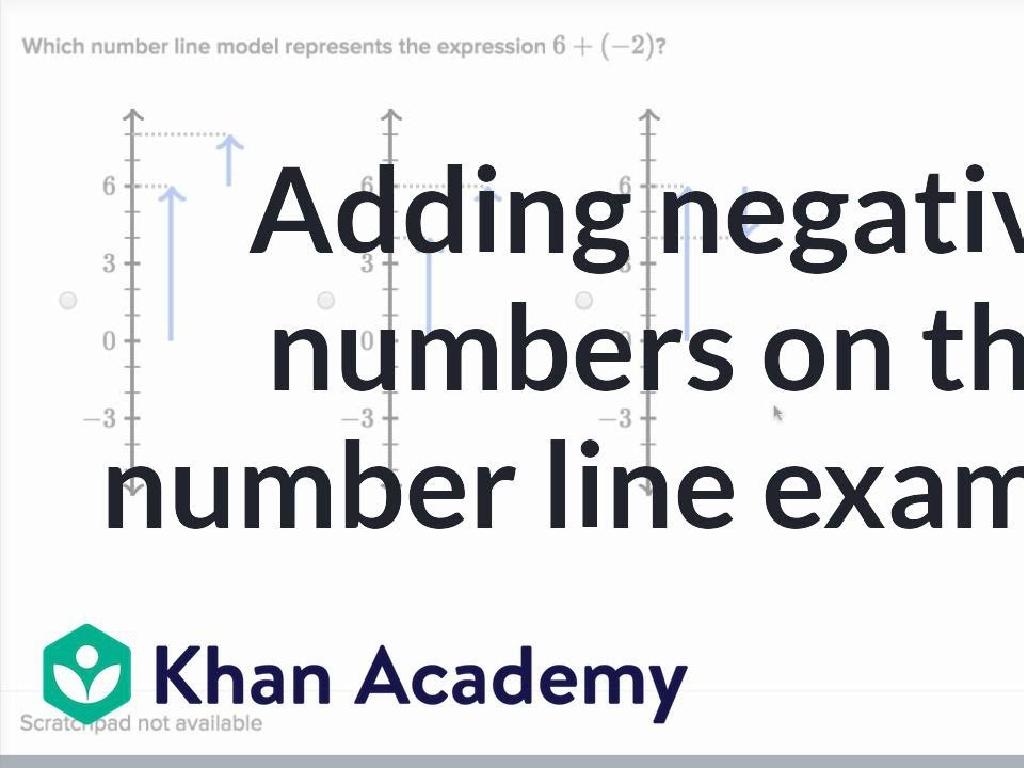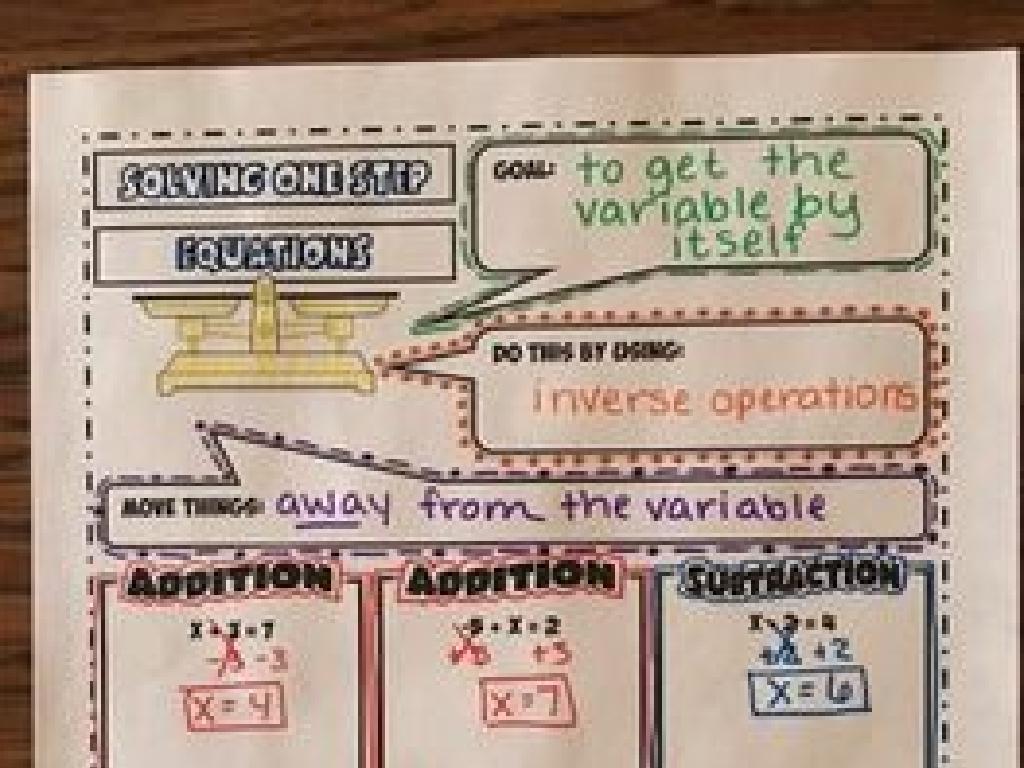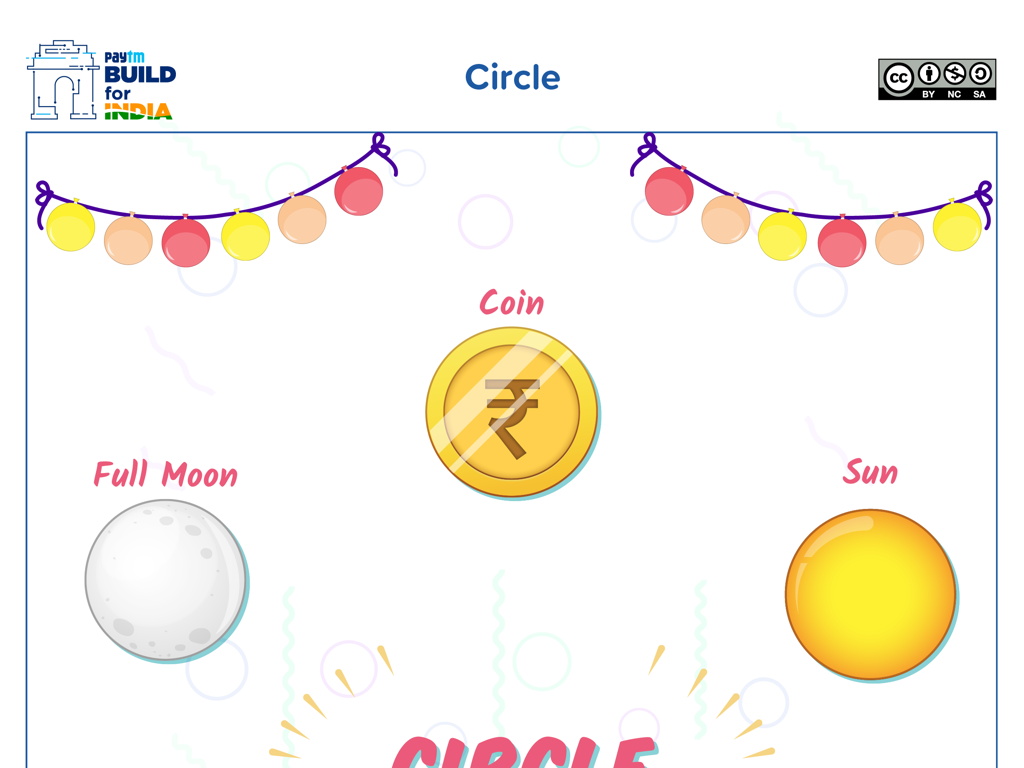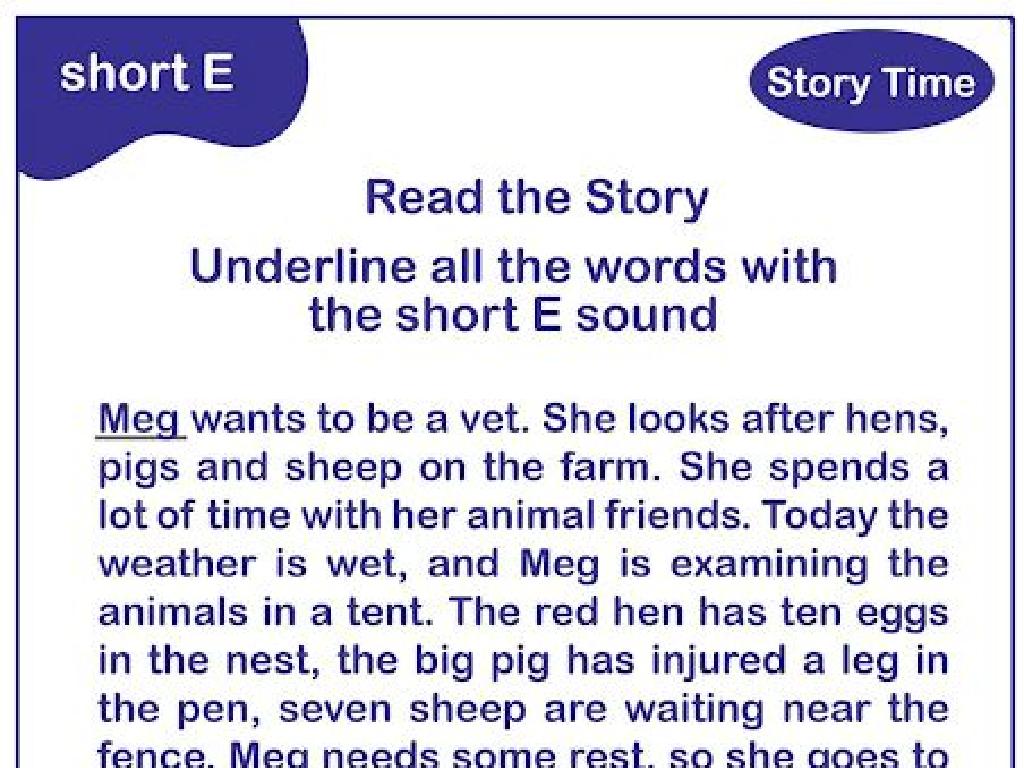Write Variable Expressions: Word Problems
Subject: Math
Grade: Seventh grade
Topic: Expressions
Please LOG IN to download the presentation. Access is available to registered users only.
View More Content
Introduction to Variable Expressions
– Understanding variables
– Variables are symbols that stand for unknown values
– Variables represent real-world situations
– They allow us to translate situations into math
– Today’s goal: Write expressions
– Practice with word problems
– We’ll convert real scenarios into algebraic expressions
|
This slide introduces the concept of variable expressions to seventh-grade students. Begin by explaining that variables are symbols, like x or y, used to represent unknown values in mathematical expressions. Emphasize how variables allow us to take real-world problems and describe them mathematically, making it easier to work with and solve these problems. Today’s goal is to practice writing variable expressions derived from word problems. Encourage students to think about how each part of the problem relates to the parts of the expression. Provide examples and guide them through the process of translating words into algebraic terms. End with an activity where students create their own word problems and exchange them with classmates to write corresponding variable expressions.
Understanding Variables in Math
– Definition of a variable
– A symbol like x or y that stands for a number
– Variables can represent any number
– Variables can change value
– Common variables: x, y, z
– These are often used in equations and functions
|
This slide introduces the concept of variables, which are foundational in algebra and higher-level mathematics. A variable is a symbol, typically a letter, that represents a number in an expression or an equation. The value of a variable can change depending on the situation. Commonly used variables in math include x, y, and z. It’s important for students to understand that variables are placeholders for numbers and can be used to simplify and solve complex problems. Encourage students to think of variables as ‘mystery numbers’ that they get to find out. Provide examples of simple equations using variables to illustrate how they can take on different values.
Understanding Expressions in Word Problems
– Expression components
– Numbers, variables, and operations like +, -, *, /
– No equal sign in expressions
– Examples: 3x + 2, 7y – 5
– 3x + 2 could represent 3 times a number plus 2
– Practice creating expressions
– Use word problems to form expressions
|
This slide introduces the concept of expressions in the context of word problems. An expression is a mathematical phrase that can include numbers, variables, and operations but does not resolve to a single value, hence no equal sign. For example, ‘3x + 2’ could represent a situation where a number is tripled and then increased by two. It’s crucial for students to understand that expressions are not complete equations but rather a part of them that shows a relationship between numbers and variables. Encourage students to practice creating their own expressions from word problems, emphasizing the importance of understanding the context to determine the correct operation and variable representation.
Translating Words to Expressions
– Recognize key mathematical phrases
– Example: ‘Sum of a number and 5’
– ‘Sum of a number and 5’ means ‘x + 5’
– Translate phrases to expressions
– Convert verbal phrases into variable expressions
– Practice with different phrases
– Identify operations like ‘sum’, ‘difference’, ‘product’, ‘quotient’
|
This slide is aimed at helping students understand how to translate verbal phrases into algebraic expressions. Start by discussing common phrases that indicate mathematical operations, such as ‘sum’ for addition, ‘difference’ for subtraction, ‘product’ for multiplication, and ‘quotient’ for division. Use the example ‘sum of a number and 5’ to show how it translates to ‘x + 5’. Encourage students to practice by identifying key phrases in word problems and writing the corresponding expressions. Provide a variety of examples and encourage students to come up with their own phrases to translate. This will help them become more comfortable with creating expressions from word problems.
Writing Expressions from Word Problems
– Carefully read the problem
– Determine the variable
– Find what’s unknown or changing
– What does the variable represent?
– Variable could be any letter, like ‘n’ for number of items
– Translate to a math expression
– Use math symbols to show operations
|
This slide is aimed at guiding students through the process of writing variable expressions from word problems. Start by reading the problem thoroughly to understand the scenario. Next, identify the variable, which is the unknown or changing element in the problem. Clarify what the variable represents, such as a quantity or measurement. Then, translate the situation into a mathematical expression using appropriate symbols and operations. Encourage students to practice by converting verbal descriptions into algebraic expressions, reinforcing the concept that variables can represent numbers in real-world situations.
Writing Variable Expressions: Word Problems
– Understanding the problem statement
– Identifying the variable
– Let ‘n’ represent the unknown number
– Writing the expression
– Translate words into math: n + 12
– Example: A number increased by 12
– If ‘n’ is our number, ‘n + 12’ expresses ‘a number increased by 12’
|
This slide is aimed at teaching students how to write variable expressions for word problems. Start by reading the problem carefully to understand what is being asked. Next, identify the variable which represents the unknown quantity in the problem; in this case, we let ‘n’ be the unknown number. Then, write the expression that models the situation described in the problem. For the given example, ‘a number increased by 12’ translates to ‘n + 12’. Encourage students to practice by creating similar expressions for different word problems and to always define their variables clearly.
Practice Problems: Variable Expressions
– Work on practice problems together
– Translate problems into expressions
– Convert the description of a situation into an algebraic expression.
– Discuss solutions collectively
– Share different approaches and clarify doubts.
– Enhance understanding of expressions
– Reinforce the concept through group problem-solving.
|
This slide is designed to engage students in active learning by collaboratively working through practice problems that involve writing variable expressions from word problems. The teacher should facilitate the activity by guiding students through the process of translating word problems into algebraic expressions. Encourage students to participate in the discussion of solutions, fostering a classroom environment where they feel comfortable sharing their thoughts and strategies. This collaborative approach not only helps students understand the material better but also promotes critical thinking and problem-solving skills. The teacher can prepare a set of diverse problems that vary in complexity to cater to the different skill levels within the class.
Class Activity: Crafting Word Problems
– Partner up and write word problems
– Exchange problems with another team
– Solve their problem by writing expressions
– Use variables to represent unknown numbers
– Discuss solutions with the class
– Explain your reasoning and how you solved it
|
This activity is designed to foster collaboration and deepen students’ understanding of writing variable expressions from word problems. Students will pair up to create their own word problems, encouraging them to think critically about how everyday situations can be translated into mathematical expressions. After writing their problems, they will swap with another pair, challenging them to interpret and solve a new problem. This exchange will not only test their problem-solving skills but also their ability to communicate mathematical ideas effectively. As they share their expressions with the class, encourage an open discussion about different approaches to the problems. Provide guidance on how to construct clear, solvable word problems and how to express them with variables. Offer examples if needed and be ready to assist pairs that might struggle with creating or solving the problems.
Review and Reflect: Variable Expressions
– Recap key concepts of variable expressions
– Discuss challenges faced today
– Reflect on variable expressions’ role
– Variable expressions are vital for solving real-world problems.
– Relate to real-life scenarios
– Examples: budgeting, cooking, or construction work.
|
This slide aims to consolidate the students’ understanding of variable expressions by reviewing the key concepts covered in today’s lesson. Encourage students to openly discuss any difficulties they encountered during the lesson to address any misunderstandings. Highlight the significance of variable expressions in mathematics, emphasizing their practical application in everyday life, such as in financial planning, recipe adjustments, or calculating materials needed for a project. This reflection will help students appreciate the relevance of what they’ve learned and see the connection between math and the real world. Provide examples and encourage students to think of their own examples where variable expressions are applicable.
Homework: Variable Expressions in Word Problems
– Complete the word problem worksheet
– Write variable expressions for problems
– Translate the problem’s story into a math expression using variables
– Understand each expression’s meaning
– Ensure you know why each part of your expression is there
– Get ready to discuss in the next class
|
This homework assignment is designed to reinforce students’ understanding of writing variable expressions from word problems. Students should complete the provided worksheet, which includes various word problems. They must translate the scenarios into algebraic expressions, using appropriate variables to represent unknown quantities. Encourage students to think critically about the relationship between the words in the problem and the mathematical operations they represent. In the next class, there will be a discussion where students can explain their reasoning and how they formulated their expressions. This will help them to articulate their thought process and solidify their understanding of the topic.






